Are you tired of high rent payments and looking for a smarter way to live? Stationary RV living might be the answer you’ve been searching for. This lifestyle involves parking your RV in one spot for an extended period instead of constantly moving from place to place.
More people are choosing this option as a practical solution to rising housing costs. Remote workers, families building their dream homes, and budget-conscious individuals find it especially appealing.
In this guide, you’ll learn everything about making stationary RV living work for you. We’ll cover choosing the right RV, setting up your site properly, and making your space comfortable for the long term.
What Is Stationary RV Living?
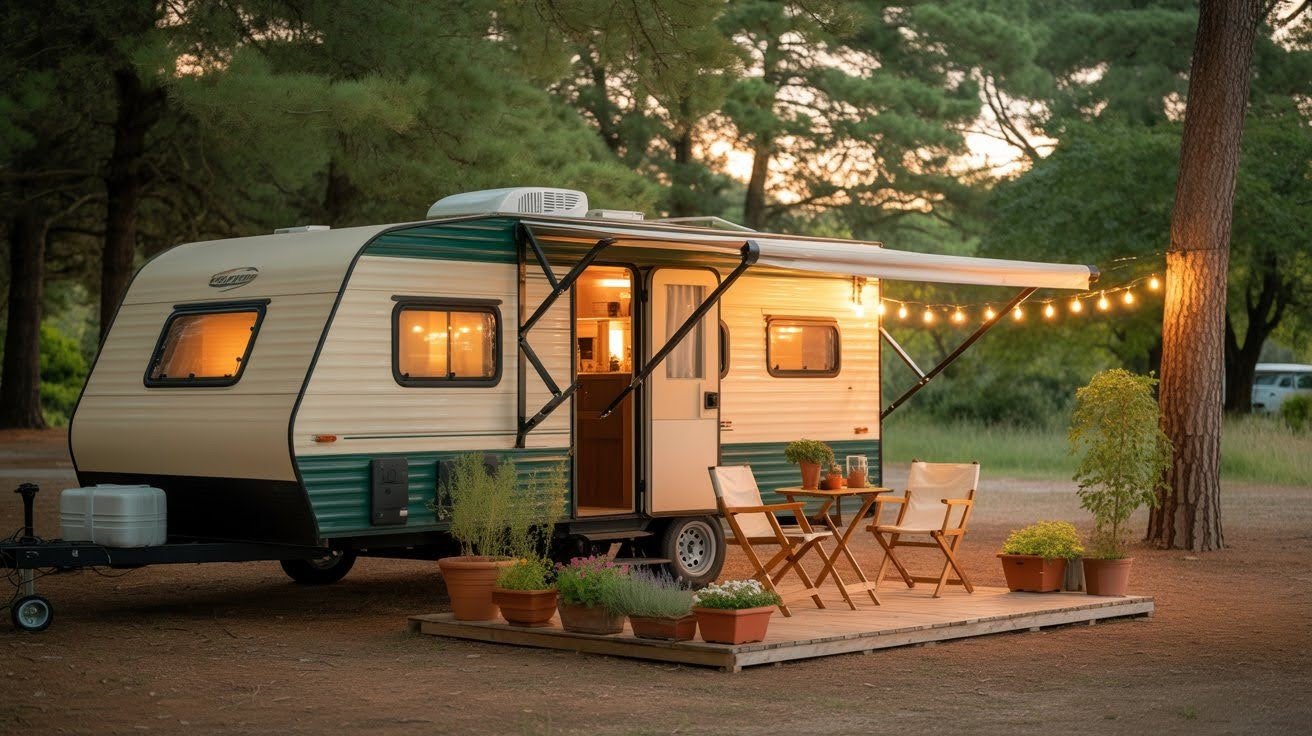
Stationary RV living means parking your recreational vehicle in one location for months or even years. Unlike the traditional RV lifestyle, where you travel constantly, you stay put in a single spot. Think of it as using your RV like a small house rather than a vehicle for road trips.
People choose this lifestyle for several practical reasons. The biggest advantage is saving money compared to renting an apartment or paying a mortgage. Some families use it as temporary housing while they build a permanent home on their property. Others work seasonal jobs at campgrounds or resorts and need affordable housing nearby.
Most people who try stationary RV living stay in one place for six months to several years. Popular locations include private land you own, RV parks with monthly rates, and campgrounds that allow extended stays. The key difference from mobile RV life is stability. You’re not packing up and moving every few days.
Is This Lifestyle Right for You?

Before committing to stationary RV living, think carefully about your location and climate. If you live somewhere with harsh winters, you’ll need a four-season RV with proper insulation. Hot climates require excellent air conditioning and ventilation. Check local zoning laws too, as some areas don’t allow people to live in RVs full-time.
Money matters when making this decision. Calculate your total costs, including the RV payment, insurance, and monthly site rental fees. Compare this to what you currently pay for housing. Most people save between 30% and 50% on housing costs. However, you’ll spend more on propane, electricity, and regular maintenance than you might expect.
Your job and family situation also play a big role. Remote workers and freelancers adapt easily to stationary RV living since they can work from anywhere with good internet. Families with young children need to plan for homeschooling or proximity to schools. Space becomes tight with more than two or three people, so consider whether everyone can handle living in close quarters. This lifestyle works best for people who don’t mind downsizing their belongings significantly.
Choosing the Right RV for Stationary Living
Picking the right RV makes all the difference when you plan to stay in one place long term. Your choice affects your daily comfort, maintenance costs, and overall satisfaction with the lifestyle.
Size and Layout Considerations
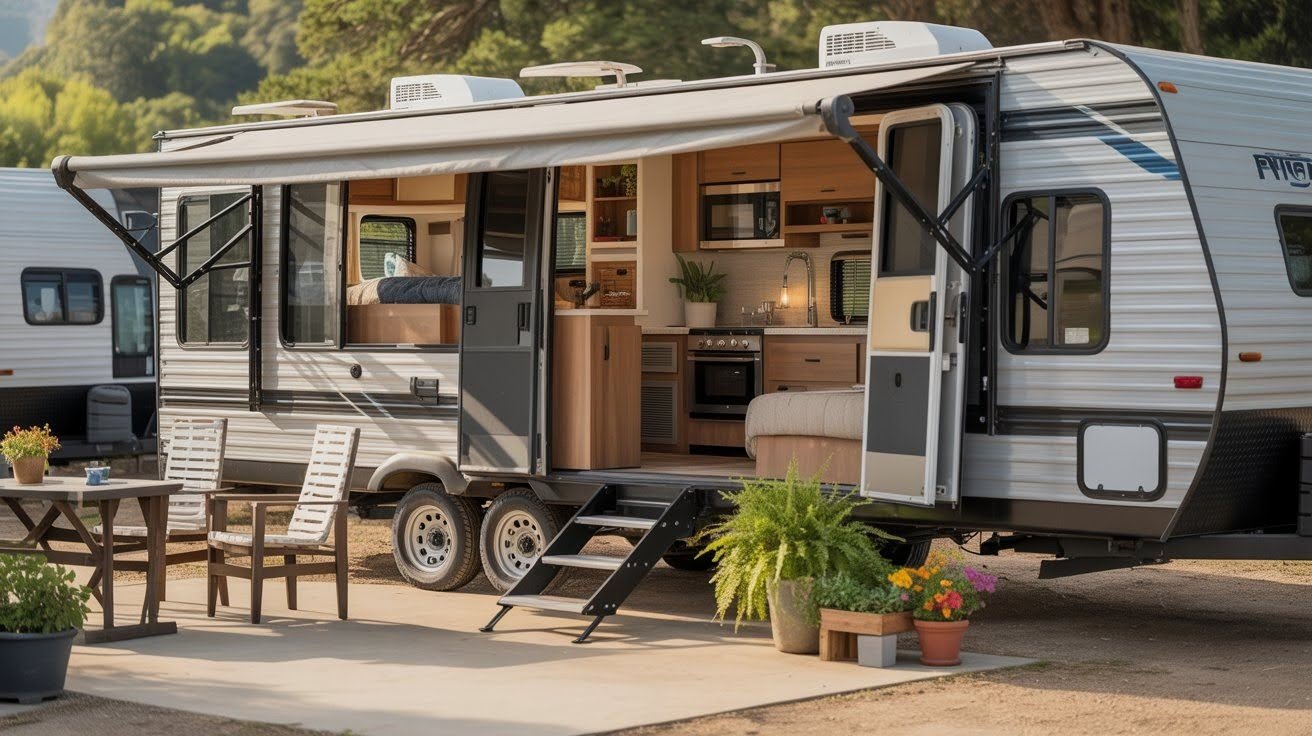
Bigger RVs work better for stationary living because you need actual living space, not just sleeping areas. A 30-foot or larger RV gives you room to spread out and store your belongings properly. Look for models with slide-outs that expand your interior space when parked.
The layout should feel like a real home with distinct areas for sleeping, cooking, and relaxing. Check that the kitchen has full-size appliances and counter space for meal preparation. Make sure the bathroom is comfortable for daily use, not just weekend camping trips. Count how many people will live in the RV and verify there are enough sleeping spots and storage areas for everyone.
Towable vs. Motorized Options
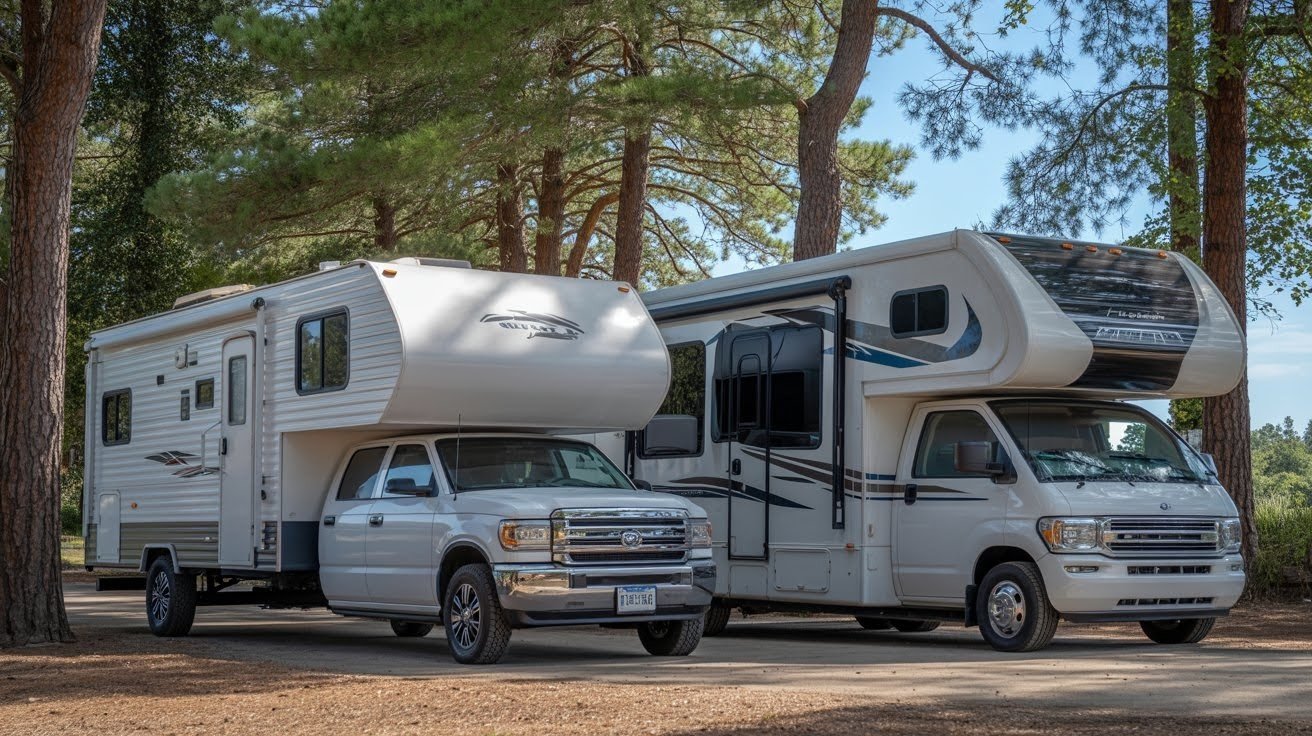
Travel trailers and fifth wheels are popular choices for stationary RV living because they offer more interior space per dollar. Once you park them, you still have a truck or vehicle available for daily errands and work. Fifth wheels provide the most space and often include residential features like king-size beds and full kitchens.
Motorhomes cost more, but put everything in one unit. Class A motorhomes offer the most luxury and space but require the highest investment. Class C models provide a good middle ground with decent space at a lower price point. Remember that with a motorhome, you’ll need a separate car for running errands unless you want to drive your entire home every time you go to the store.
Essential Features and Amenities
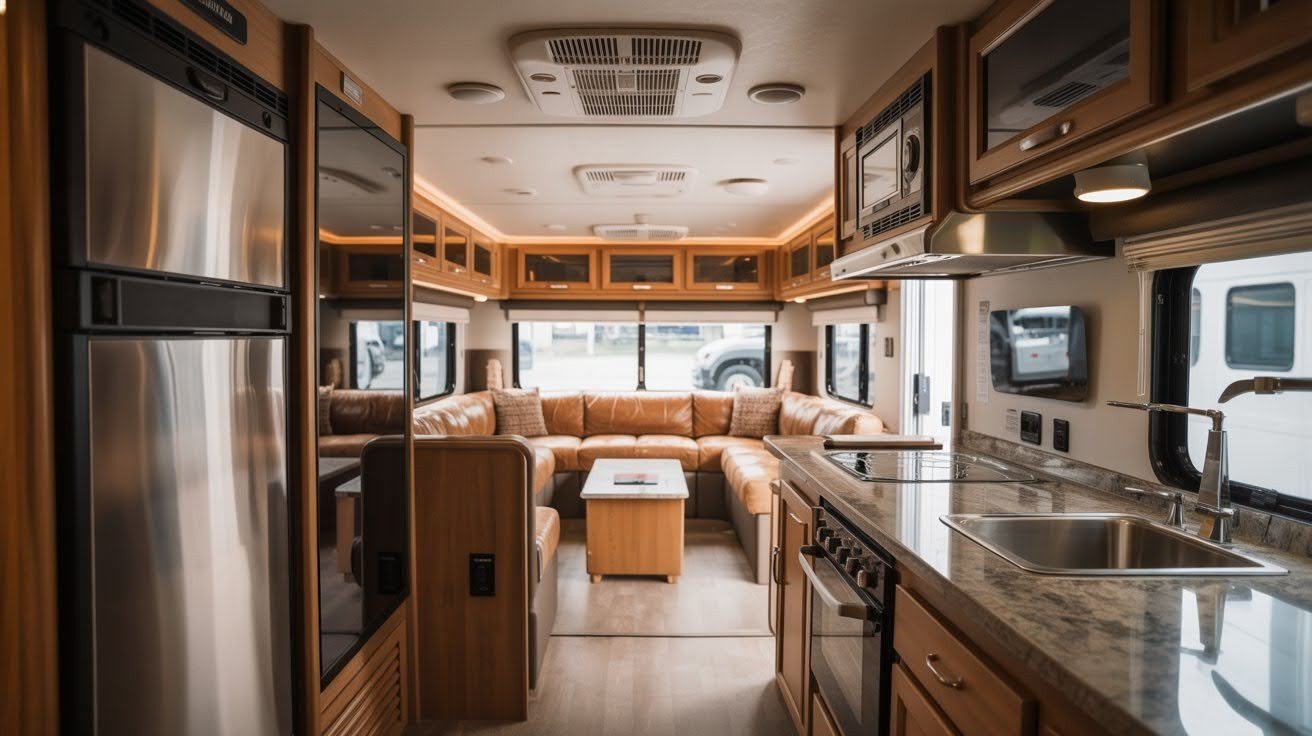
Your stationary RV needs a full-size kitchen with a residential refrigerator, oven, and enough counter space to cook real meals. Avoid models with tiny two-burner cooktops or miniature refrigerators meant for weekend camping. A full-size pantry helps you stock up on groceries like you would in a regular house.
The bathroom should have a separate shower with good water pressure and a full-size toilet. Look for RVs with residential-style furniture instead of lightweight camping furniture that won’t hold up to daily use. If you live somewhere with cold winters, four-season construction with heated tanks and better insulation is essential. Features like a washer and dryer hookup, multiple TVs, and upgraded heating and cooling systems make stationary RV living much more comfortable.
Setting Up Your Stationary RV Site

Preparing your site properly ensures your RV stays level, stable, and connected to utilities. A concrete pad measuring at least 12 feet wide and as long as your RV provides the best foundation. This prevents your RV from sinking into the ground and keeps it level year-round.
Full hookups include water, electricity, and sewer connections that work just like a regular house. You’ll need a 30-amp or 50-amp electrical service, depending on your RV size. The water connection should include a pressure regulator to protect your plumbing. For sewer, either connect to a septic system or city sewer line with proper slope for drainage. Some people hire professionals to install these utilities, which costs between $3,000 and $10,000 depending on your location and soil conditions.
If installing an underground septic isn’t possible, above-ground holding tanks offer an alternative solution. You’ll need to pump these tanks regularly, but they work well in areas with high water tables or rocky soil. Always check local building codes and get the necessary permits before starting any site work. Some counties require special permits for stationary RV living or classify it differently from camping.
Tips for Comfortable Long-Term Living
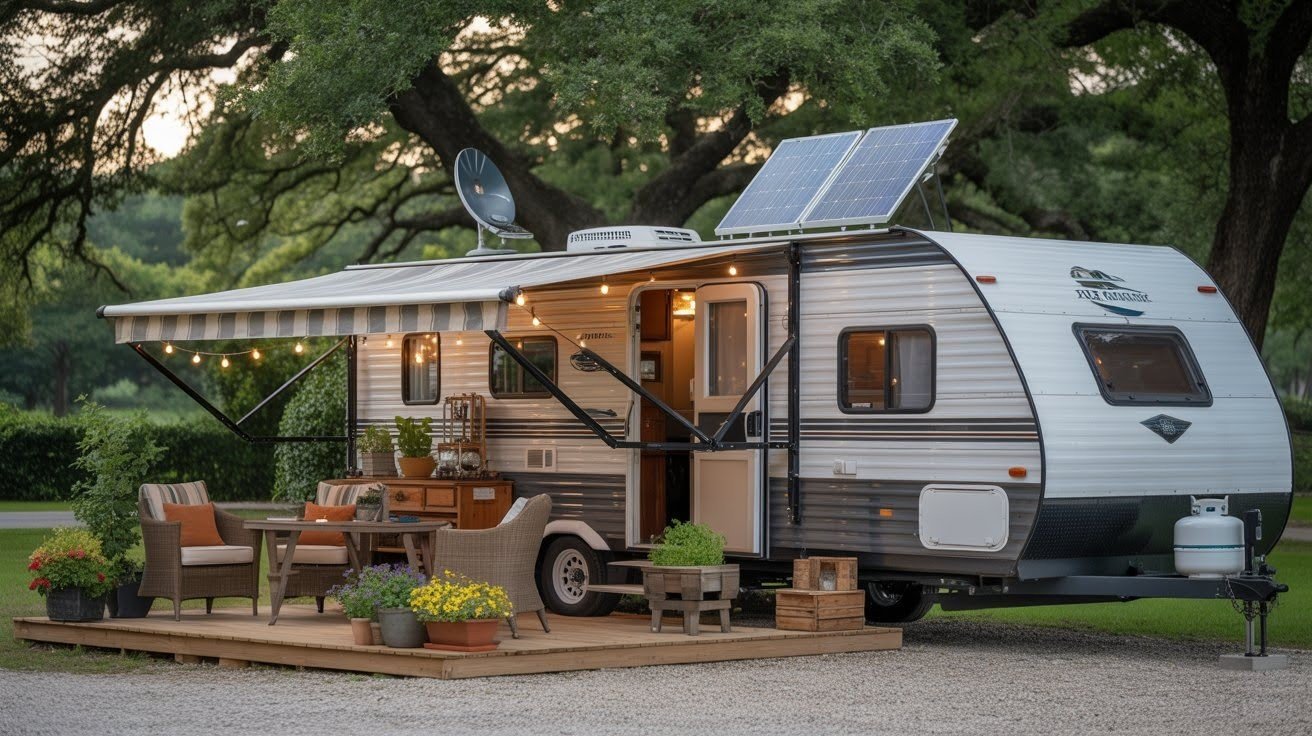
Making your RV feel like home requires smart organization and planning. Here are the most important strategies for comfortable stationary RV living:
- Storage Solutions: Use vertical space with hanging organizers and wall-mounted shelves. Under-bed storage containers keep seasonal items out of the way. Install hooks inside cabinet doors for extra hanging space.
- Mail and Address: Set up a permanent mailing address using a mail forwarding service or a friend’s address. This helps you receive packages, register vehicles, and maintain a legal residence.
- Internet Access: Invest in a mobile hotspot with unlimited data or find an RV park with reliable WiFi. Many remote workers use cellular boosters to strengthen their signal in rural areas.
- Winter Preparation: Add skirting around your RV’s bottom to trap heat and protect pipes. Use heated water hoses to prevent freezing. Extra insulation in windows and vents keeps warmth inside during cold months.
- Maintenance Schedule: Check your roof seals every three months to prevent leaks. Service your heating and cooling systems before each season. Inspect your tires monthly, even though you’re not driving.
Create an outdoor living space with a deck, patio furniture, or awning to expand your usable area. This extra room makes a huge difference when the weather is nice. Plant a small garden or add planters to make your site feel more permanent and homey.
Conclusion
Stationary RV living offers a practical solution for people who want to save money while maintaining independence and flexibility. This lifestyle cuts housing costs significantly while giving you the freedom to own your home without a massive mortgage.
The key to success is choosing the right RV, setting up your site correctly, and adapting to a simpler way of life. Take time to plan your budget, research local regulations, and prepare your space properly before making the move.
Think honestly about whether this lifestyle matches your needs and personality. If you value financial freedom over extra space and don’t mind a smaller living area, stationary RV living could be perfect for you. Start by visiting RV parks, talking to current RV dwellers, and calculating your potential savings to see if this choice makes sense for your situation.
Frequently Asked Questions
Can I Live in an RV on My Own Land Year-Round?
This depends entirely on your local zoning laws and county regulations. Some rural areas allow it freely, while others restrict RV living to 180 days per year or less. Contact your county planning office to check the rules before buying land or moving your RV.
How Much Does It Cost to Set Up Full Hookups?
Professional installation of water, electric, and sewer hookups typically costs between $3,000 and $10,000. The price varies based on distance from existing utilities, soil conditions, and permit fees. DIY installation can cut costs by 40% to 60% if you have the skills and time.
What Do I Do About Healthcare and Mail When Living Stationary?
Establish legal residency in your state by using your RV park address or a mail forwarding service. This allows you to register for healthcare, get a driver’s license, and vote. Many RV dwellers use South Dakota, Texas, or Florida as their legal residence due to favorable laws.
How Do I Winterize My RV for Cold Climates?
Install skirting around the RV base to block wind and trap heat underneath. Use heated water hoses and add heat tape to exposed pipes. Seal windows with insulation film and add thermal curtains. Run a space heater in storage bays where water lines are located during freezing temperatures.
What Size RV Do I Need for a Family of Four?
A family of four needs at least a 35-foot RV with multiple slide-outs for adequate living space. Look for models with bunk beds or a separate bedroom plus a convertible dinette or sofa. Consider a fifth wheel or large travel trailer rather than a motorhome to maximize interior room within your budget.

